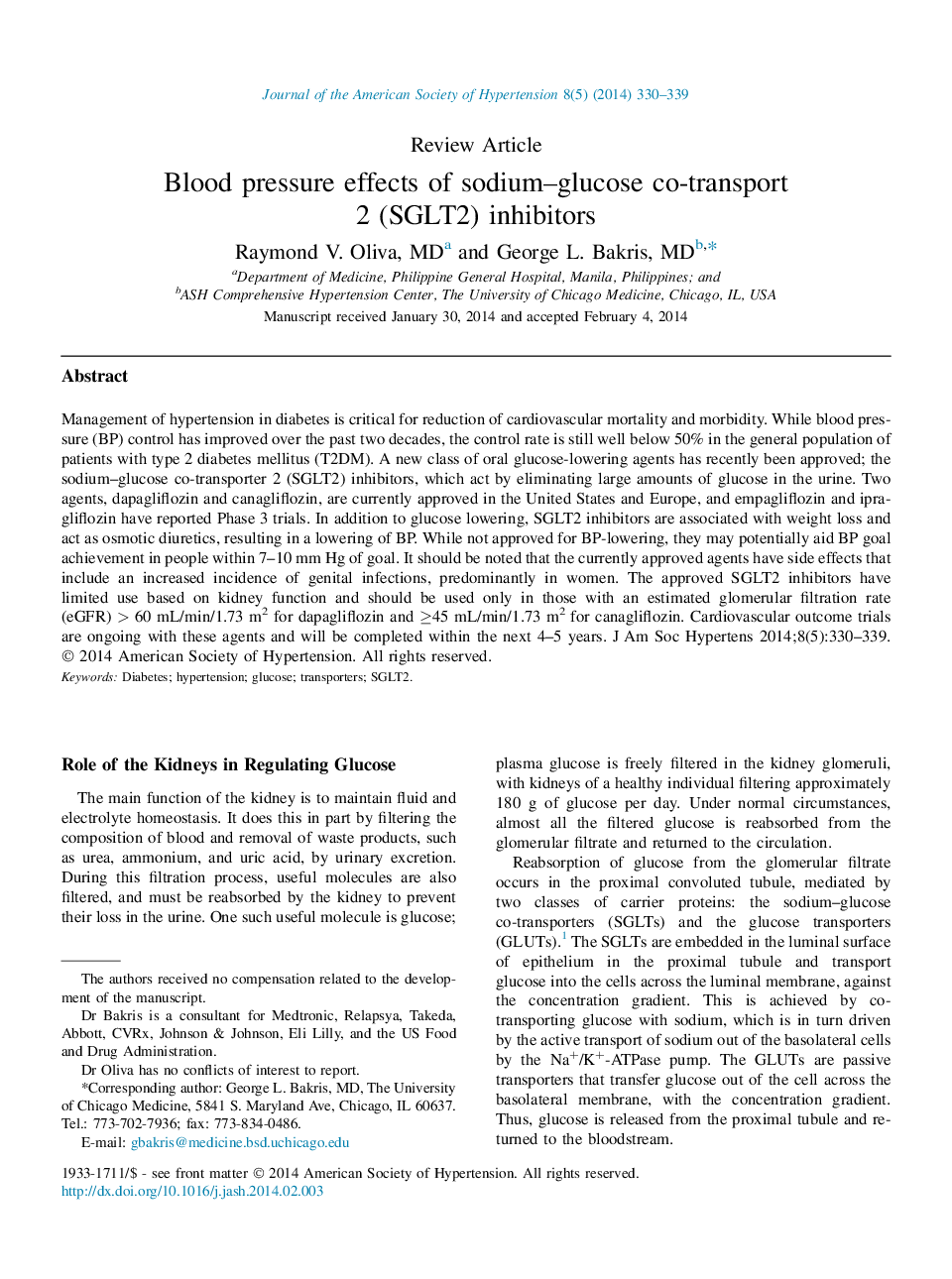| کد مقاله | کد نشریه | سال انتشار | مقاله انگلیسی | نسخه تمام متن |
|---|---|---|---|---|
| 2956566 | 1578051 | 2014 | 10 صفحه PDF | دانلود رایگان |

Management of hypertension in diabetes is critical for reduction of cardiovascular mortality and morbidity. While blood pressure (BP) control has improved over the past two decades, the control rate is still well below 50% in the general population of patients with type 2 diabetes mellitus (T2DM). A new class of oral glucose-lowering agents has recently been approved; the sodium–glucose co-transporter 2 (SGLT2) inhibitors, which act by eliminating large amounts of glucose in the urine. Two agents, dapagliflozin and canagliflozin, are currently approved in the United States and Europe, and empagliflozin and ipragliflozin have reported Phase 3 trials. In addition to glucose lowering, SGLT2 inhibitors are associated with weight loss and act as osmotic diuretics, resulting in a lowering of BP. While not approved for BP-lowering, they may potentially aid BP goal achievement in people within 7–10 mm Hg of goal. It should be noted that the currently approved agents have side effects that include an increased incidence of genital infections, predominantly in women. The approved SGLT2 inhibitors have limited use based on kidney function and should be used only in those with an estimated glomerular filtration rate (eGFR) > 60 mL/min/1.73 m2 for dapagliflozin and ≥45 mL/min/1.73 m2 for canagliflozin. Cardiovascular outcome trials are ongoing with these agents and will be completed within the next 4–5 years.
Journal: Journal of the American Society of Hypertension - Volume 8, Issue 5, May 2014, Pages 330–339